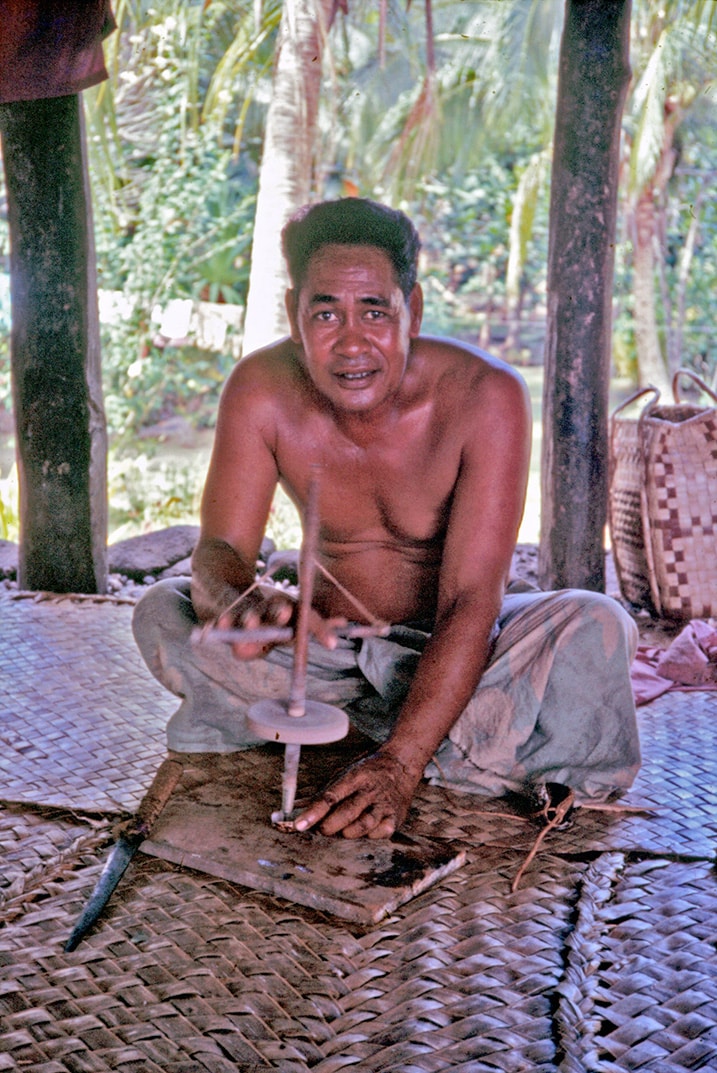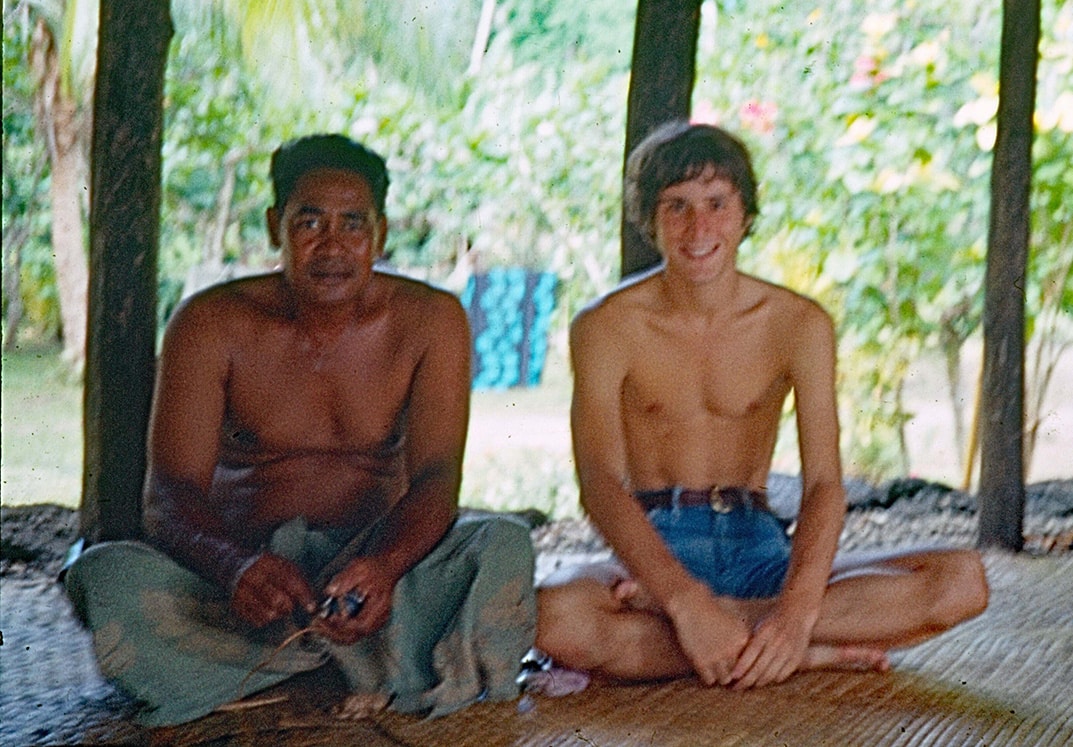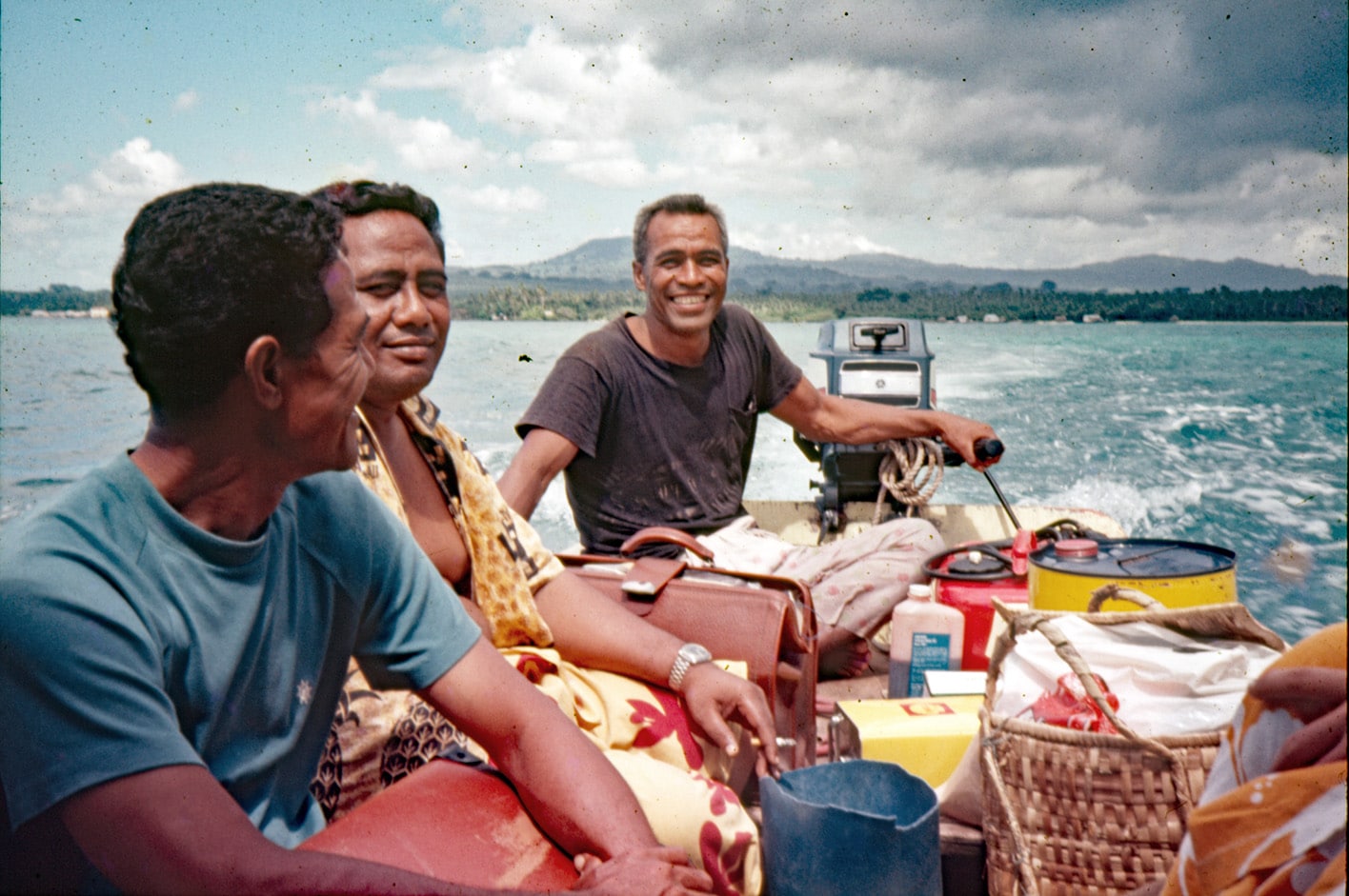Sulu was a matai, an orator chief on the tiny island of Manono and the head of the family that I lived with during my Peace Corps training in this South Pacific country. It also wasn’t long before I learned that Sulu Fa’afuata was perhaps the best octopus fisherman on the island.
Situated between the two large islands of Samoa, Upolu and Savai’i, Manono is about a mile in diameter with a single sandy path encircling the island. At the time that I was there, there was no electricity and all drinking water had to be collected daily from the large concrete cistern at the nearby church and carried in buckets back to everyone’s home. You could circumnavigate Manono in about an hour, assuming, of course, you politely refused the countless invitations that you would receive to come in and eat from each and every house that you passed along the way.
As a 21-year-old kid from New York City, life on the island of Manono was far from anything that I had ever experienced. Before Samoa, all the food that I ate would generally be purchased from a supermarket and completely isolated from its source.
That was certainly not the case in Samoa and especially on Manono where most of the food we ate was either grown or raised on the island or caught in the lagoon. Whenever on one of my walks I accepted one of those spontaneous invitations to come into someone’s home, the head of the house called for one of the children to run out and catch and dispatch one of the chickens that were always running around the yard, I was obliged to spend the next few hours drinking kava, explaining why I was not yet married, and describing life in America while we waited for the meal to be prepared.
The revenge of the octopus
The best meal, however, was the traditional Samoan dish of fai’ai fe’e, or octopus, cooked in a stone oven and served in a coconut cream. Over the three and one half years that I was in Samoa, fai’ai fe’e was without doubt my favorite dish. With Sulu’s skill in catching it, octopus was something that I could always look forward to each time I took the small boat ride out to Manono to visit.
An excellent fisherman, Sulu was also skilled in the traditional art of crafting the lure that is used throughout many Pacific Island nations to catch octopus. The lure is shaped to look like a rat following an ancient Polynesian legend about a helpful octopus who offered to save a rat from drowning by allowing the rat to sit on his head as the octopus swam him to shore. Once the rat was safe on shore he rewarded the octopus for his kindness by defecating on the octopus’ head before jumping onto the beach. To this day the octopus seeks revenge against the rat for its betrayal: the lure, ma’a ta’i fe’e, or stone to catch an octopus, takes the shape of a rat.
On my first visit to Manono, I watched Sulu twist an ancient hand drill to bore holes in pieces of cowrie shells that he affixed to a cone-shaped stone with either sennit twine or a more modern fishing line. He then fashioned a tail and whiskers to create a perfect facsimile of the octopus’ arch nemesis, the rat.
Sulu would then paddle out into the lagoon in his paopao, a small hand-carved outrigger canoe. At the appropriate location that he seemed to always know, he lowered the lure into the water, bounced it up and down above the bottom of the lagoon, sometimes tapping the lure on a coral head to make it sound like the squeaks of a rat. The octopus, remembering its log-harbored grudge against the rat, would rush out to the lure and grab hold of it with its tentacles. Sulu would then raise the lure—with the octopus holding on to the lure with such a vengeance—then lift his catch out of the water and, as is tradition, bite the octopus between the eyes to kill it.
As my time in Samoa came to an end and on my last visit to Manono, Sulu presented me with one of his well-used octopus lures to remember him and my Samoan family.
I recently discovered an important documentary film of this ancient Samoan tradition that shows the current fishing practice and an interview of High Chief Taumau Aloese. The film produced by James Gurr for the Samoan Studies Institute.
For the next 50 years, as I caught sight of my lure hanging in a place of honor on the wall above my desk in my office or more recently at home, I would think back so fondly on a time, a place and a fisherman who meant so very much to me.
Gene Carl Feldman’s service in Western Samoa led to his career as an oceanographer with NASA’s Goddard Space Center.







